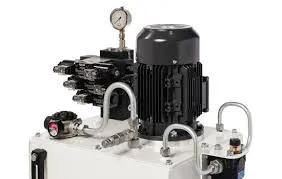Aug . 06, 2024 15:51 Back to list
Exploring Effective Sealing Solutions for Hydraulic Cylinder Performance and Longevity
Hydraulic Cylinder Seals Ensuring Efficiency and Performance
Hydraulic systems are integral to various industries, providing the necessary power and control for equipment ranging from construction machinery to manufacturing processes. At the heart of these systems lies the hydraulic cylinder, a component that converts hydraulic energy into mechanical force. However, the performance and reliability of hydraulic cylinders heavily depend on the quality of the seals used within them. This article explores the critical role of hydraulic cylinder seals, their types, applications, and the factors affecting their performance.
Understanding Hydraulic Cylinder Seals
Hydraulic cylinder seals are essential for maintaining the integrity of hydraulic systems. They prevent hydraulic fluid from leaking out of the cylinder and protect contaminants from entering, ensuring the efficient operation of the system. These seals must withstand substantial pressure, varying temperatures, and compatibility with different hydraulic fluids. Therefore, the selection of the right seal is crucial for the longevity and effectiveness of hydraulic systems.
Types of Hydraulic Cylinder Seals
Several types of seals are used in hydraulic cylinders, and each serves a specific purpose
1. Rod Seals These seals are located at the rod's entry point into the cylinder. They prevent hydraulic fluid from leaking out when the rod is extended or retracted. Common materials include polyurethane and nitrile rubber, chosen for their durability and resistance to wear.
2. Piston Seals Piston seals are positioned between the piston and the cylinder wall. They ensure that pressure is maintained within the cylinder, promoting proper functionality. Various designs are available, such as O-ring seals and U-cup seals, each with unique advantages.
3. End Caps and Backup Rings End caps secure the seals in place and provide a barrier to fluid loss at the cylinder's ends. Backup rings are often used in conjunction with primary seals to prevent extrusion and enhance seal longevity.
4. Wiper Seals These seals are crucial for preventing dirt and debris from entering the cylinder. Positioned at the outermost part of the cylinder, wipers keep the surface clean, reducing wear on internal components.
Applications of Hydraulic Cylinder Seals
hydraulic cylinder seals products

Hydraulic cylinder seals find applications across various industries, including
- Construction and Earthmoving Heavy machinery, such as excavators and bulldozers, relies on robust hydraulic systems for operation. Seals ensure maximum performance under demanding conditions.
- Manufacturing and Automation Hydraulic cylinders are commonplace in automated machinery, where precision and reliability are vital. Seals maintain the integrity of these systems, contributing to overall production efficiency.
- Automotive In automotive applications, hydraulic seals are used in braking systems and power steering. High-performance seals are essential for safety and functionality.
Factors Affecting Seal Performance
Several factors can impact the effectiveness and lifespan of hydraulic cylinder seals
- Temperature and Pressure Extreme temperatures or high-pressure conditions can lead to seal deformation, wear, or failure. Selecting seals made from materials that can withstand specific operating conditions is crucial.
- Fluid Compatibility The hydraulic fluid used in the system must be compatible with the seal material. Incompatibility can lead to chemical degradation and seal failure.
- Contamination Dirt, debris, and other contaminants can compromise seal integrity. Regular maintenance and the use of wiper seals can mitigate these risks.
Conclusion
In conclusion, hydraulic cylinder seals play a pivotal role in the functionality and longevity of hydraulic systems. Understanding the different types of seals, their applications, and the factors affecting their performance can help in making informed choices that enhance operational efficiency. With high-quality seals, industries can optimize their hydraulic systems, ensuring reliable performance and reducing maintenance costs over time. Investing in the right sealing solutions ultimately contributes to the overall success of any hydraulic application.
-
1.5 Ton Flipping Oil Cylinder 70/82-40-217-720-Hebei Shenghan Hydraulic Machinery|Precision Hydraulic Cylinder,Custom Hydraulic Solutions
NewsAug.29,2025
-
1.5 Ton Flipping Oil Cylinder 70/82-40-217-720 | Hebei Shenghan Hydraulic Machinery Co., Ltd.
NewsAug.29,2025
-
High-Precision [90/105-50-180-480] Industrial Component | Durable & Reliable
NewsAug.27,2025
-
High-Performance Set of 50/60-45-290 471 | Durable & Reliable Components
NewsAug.26,2025
-
Efficient Pallet Truck Power Units - Reliable Hydraulic Systems
NewsAug.25,2025
-
Premium Set of 50/60-45-290 471 Parts | High Performance
NewsAug.24,2025
